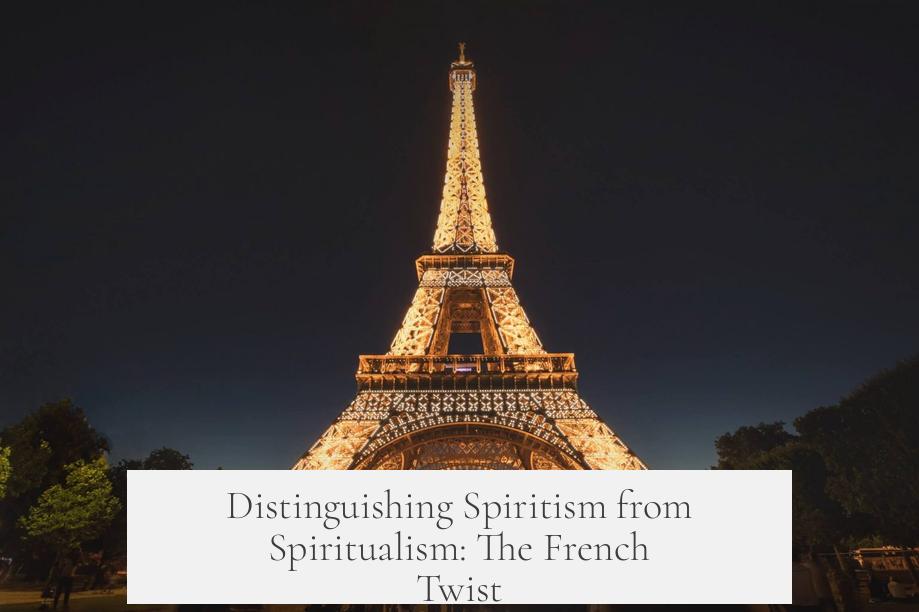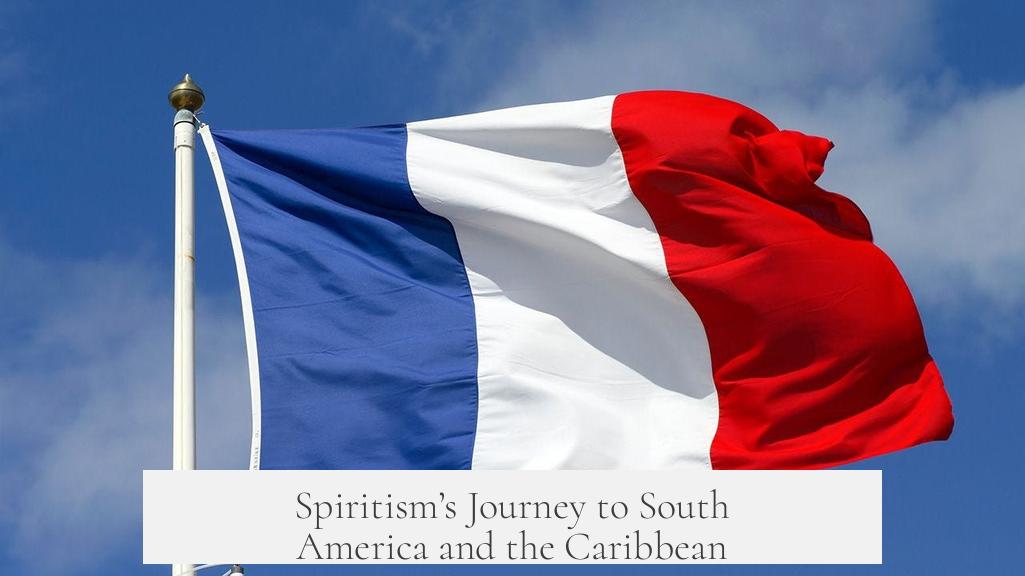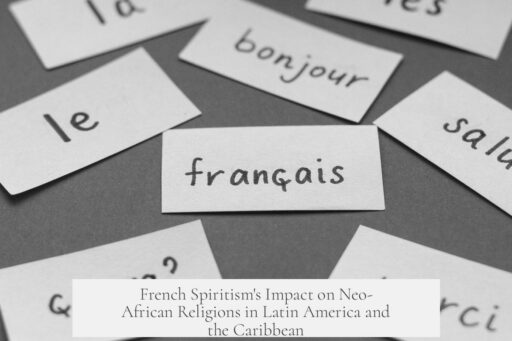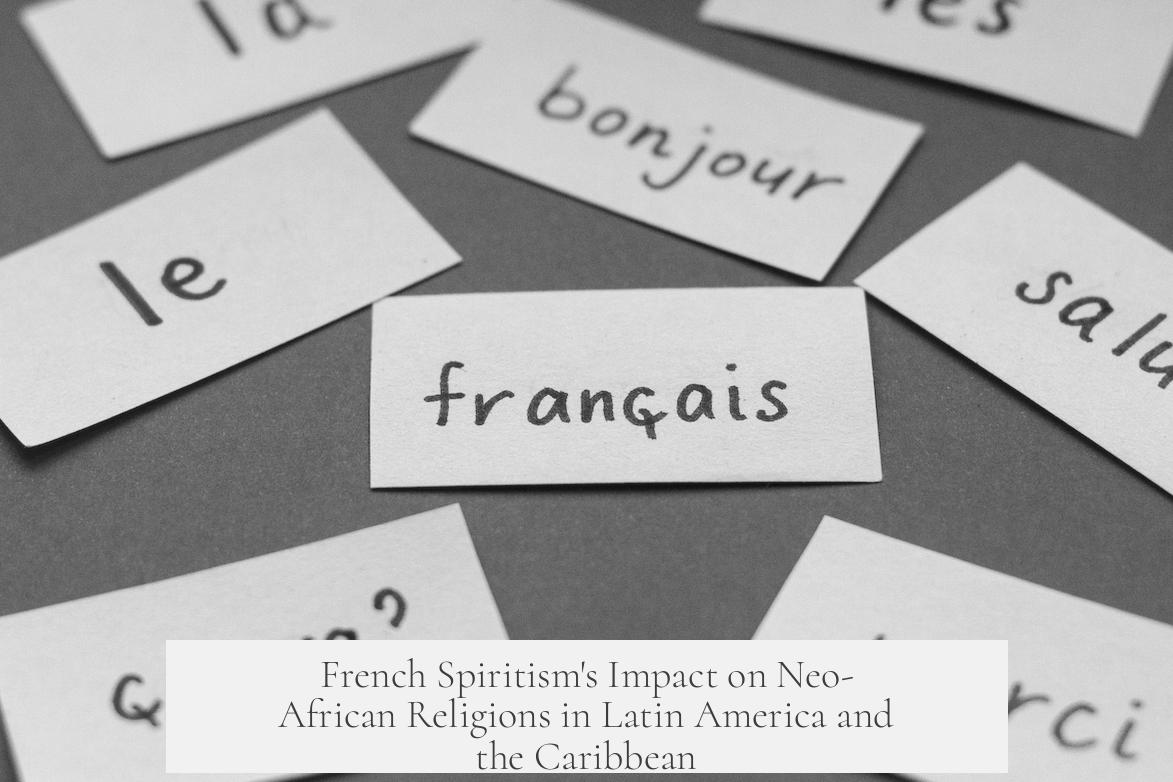French Allan Kardec’s Spiritism movement influenced many neo-African religious practices in Latin America and the Caribbean, such as Vodou and Santeria, by providing a structured and accessible system for spirit communication that filled cultural and religious voids left by slavery and displacement. Spiritism offered a pragmatic alternative that aligned well with the ancestral traditions of Yoruba and Kongo descendants, allowing them to maintain connections with their spiritual heritage in a transformed environment.
Spiritism is a unique doctrine developed by Allan Kardec in 19th-century France. Kardec systematized early Spiritualism into a formalized framework, combining scientific-like standards for spirit communication with elements of diverse traditions. His doctrine incorporated Eastern ideas like karma and reincarnation, aspects of Protestant reformation theology, Catholic spiritual hierarchies, and social reform ideals. This blend gave Spiritism a distinctive identity that resonated strongly in Catholic majority regions, particularly South America.
Spiritism arrived in Latin America initially through European-educated elites. It reached the continent via publishing and some Spanish refugees after the Glorious Revolution of 1868. These upper-class communities first embraced the movement as a novel spiritual and intellectual practice. However, Spiritism did not remain confined to elites for long. It spread widely to lower-class populations, including Afro-descendants from Yoruba and Kongo ethnic groups, who had endured cultural disruption due to slavery.
The Afro-Latin populations faced challenges in maintaining traditional religious roles and practices. For example, in Yoruba culture, the Egungun priest was a key figure for communicating with ancestral spirits. The Egungun cult required significant resources to maintain and gradually declined in the Americas. As a result, Yoruba descendants experienced a deep religious void concerning ancestral spirit communication.
Spiritism provided a simpler, safer, and more pragmatic avenue to fill that void. It did not require costly rituals or elaborate priesthoods. Instead, it offered a systematized practice through séances and spirit communication that aligned with Yoruba cosmology in function, if not form. This allowed Yoruba-derived religions like Santeria in Cuba to flourish with a complementary spiritual tool that made ancestor veneration more accessible in the Caribbean context.
The Kongo-descended populations similarly adopted Spiritism because it matched core elements of their spiritual worldview. In Kongo religion, spirits are considered expressions of the Supreme Being Nzambi, a concept comfortably paralleled by Kardec’s Spiritism doctrines. Slavery and forced migration fractured traditional religious institutions, leaving gaps in ancestor worship and spiritual intercession.
Spiritism offered a religious “technology” that restored these lost connections. It allowed Kongo descendants to engage with ancestral spirits within a safe and structured framework. This helped preserve crucial aspects of Kongo spirituality by blending them with European Spiritist concepts, creating syncretic religious forms capable of surviving the harsh realities of the Atlantic slave trade and colonial societies.
Overall, Spiritism’s influence on neo-African religions in Latin America and the Caribbean arose because it met a specific spiritual need. It filled the specialized communicative role with the dead that original Yoruba and Kongo practices could no longer perform effectively after displacement. By doing so, Spiritism became a vital component in Afro-Latin religious syncretism, underpinning the sustainability and evolution of traditions like Vodou and Santeria.
Spiritism’s dominance in Catholic contexts and its scientific-like structure helped Afro-descendant communities reclaim and reshape their spiritual heritage under colonial conditions, making it more accessible and adaptable for various social classes.
| Factor | Explanation |
|---|---|
| Systematization by Allan Kardec | Unified doctrine combining scientific standards with diverse religious elements |
| Access to Spiritism | Initially elite, then embraced by Afro-descendant lower classes |
| Yoruba Ancestral Void | Loss of Egungun priest role led to need for new ancestor communication method |
| Kongo Spiritual Compatibility | Spiritism mirrored Kongo ancestor spirit beliefs, easing adoption |
| Syncretism and Adaptability | Blended with existing practices to fit cultural needs amid diaspora challenges |
- Spiritism filled spiritual gaps left by the Atlantic slave trade’s cultural disruption.
- Its structured spirit communication appealed to both Yoruba and Kongo descendants.
- It gained traction among Afro-Latin communities beyond its European educated elite origins.
- Spiritism’s blend of diverse religious elements allowed syncretic evolution of Vodou, Santeria, and other traditions.
- It remains a significant influence on Afro-Caribbean and Afro-Latin religious practices today.
Why Did French Allan Kardec’s Spiritism Movement End Up Influencing Neo-African Religions Like Vodou and Santería?

Allan Kardec’s Spiritism became a vital bridge for Afro-Latin religious traditions, especially in Latin America and the Caribbean, by filling a spiritual and cultural gap left by slavery and displacement. But how did an intellectual French movement touch deeply rooted African religions like Vodou and Santería? Let’s unravel this fascinating story.
If you’re picturing a dusty tome from 19th-century France suddenly appearing in voodoo ceremonies, you’re not far off—though the reality is richer and more complex. Spiritism didn’t just land; it merged, adapted, and became a new religious language that resonated deeply with Afro-descendant communities. Here’s why.
Distinguishing Spiritism from Spiritualism: The French Twist

First off, Spiritism is not the same as Spiritualism. Spiritualism, the elder sibling, sprouted in Protestant circles, mainly in the US and UK. It’s surrounded by occult influences—from Mesmerism to Theosophy. In contrast, Spiritism, developed by Allan Kardec in France, sought something different: a systematic doctrine.
Kardec wasn’t just dabbling in séances. He attempted to establish “scientific-like norms” for communicating with spirits. Think of it as Spiritualism 2.0, complete with its own rules, standards, and even borrowed concepts like karma and reincarnation from Eastern philosophies. He added layers inspired by Catholic hierarchies and reformist Protestant theology. This scholarly blend made Spiritism particularly appealing in Catholic-majority regions.
This religious cocktail brew makes Spiritism uniquely positioned for adoption not only by intellectuals but also by people craving structured spirituality in the New World’s mixed cultural landscape.
Spiritism’s Journey to South America and the Caribbean

How did Spiritism get to Latin America? Initially, through commercial publishing and intellectual émigrés like Spanish refugees after the Glorious Revolution of 1868. Early adherents were primarily European-educated elites. Yet, something remarkable happened as time went on.
Lower-class Caribbean societies—comprising white settlers, indigenous peoples, and descendants of the Yoruba and Kongo—felt a palpable cultural void. Traditional religions had been fragmented by the brutal Atlantic slave trade and colonial repression. Into this void, Spiritism offered itself as a ready-made spiritual infrastructure.
Spiritism and the Yoruba Religious Practices: A Perfect Substitute?

The Yoruba people traditionally relied on the Egungun priest, a masqueraded figure who communicated with ancestral spirits (egun). However, in the Americas, this role became costly and difficult to sustain. The Egungun cult wound down, and with it went a key means of ancestral dialogue.
Spiritism stepped in as a pragmatic substitute. Why? Because it provided a simpler and safer way to talk with the dead—no costly masquerades or complex rituals necessary. Its structured mediumship and clear doctrines filled the void left by the fading Egungun traditions. Thus, Spiritism’s method wasn’t just attractive; it was a lifeline for a people whose ancestral communication had been disrupted.
Spiritism’s Harmony with Kongo Beliefs: A Cultural Refit for Slavery’s Aftermath
On the Kongo side, Spiritism found equally fertile ground. Kongo cosmology views spirits as manifestations of the Supreme Being, Nzambi, a concept resonant with Kardec’s spirit hierarchy and communication methods. This theological alignment made Spiritism feel less foreign and more like an extension of existing beliefs.
The transatlantic slave trade fractured many Kongo spiritual practices. Spiritism, by offering a structured and accessible way to interact with ancestors, effectively patched the gaps. It became a new “religious technology” that refurbished old cultural tools and gave them new life in the harsh realities of the Americas.
Filling a Specialized Spiritual Function Lost to Slavery and Displacement
In short, Spiritism heavily influenced Afro-Latin religions because it filled a specialized function lost during slavery. The disruption caused by forced migration, cultural oppression, and colonialism marginalized original ancestor communication routes. Spiritism offered a practical alternative.
It was not just an imported fad but a locally adopted solution. By merging with African religious customs, Spiritism helped create new syncretic practices—blends of European, African, and indigenous spirituality. So, religions like Vodou and Santería absorbed Spiritist ideas not by accident but by deep cultural necessity.
But What Does This Mean for Vodou and Santería Today?
Contemporary practitioners often see Spiritism’s influence on these religions as enhancing their capacities to connect with lineage spirits. Through Spiritism, mediumship practices bloom with layered complexity while keeping connections intact. It even shaped ritual forms, social roles, and community ethics.
This influence challenges stereotypes of Afro-Caribbean religions as static or “primitive.” Instead, they are dynamic, adapting, and integrating new ideas. It reminds us that religion is not about purity but survival, adaptation, and meaning-making.
Practical Insights: What Can We Learn from This Spiritual Fusion?
- Adaptability is key. Religions and cultures are not locked in time; they evolve to meet new needs.
- Simplification helps survival. Spiritism’s straightforward communication methods made complex traditions accessible in harsh conditions.
- Cross-cultural borrowing enriches faith. Bringing Eastern concepts and Catholic ideas into Spiritism created a unique spiritual toolkit.
- Spiritual voids seek filling. When traditional forms falter, people actively seek new systems to maintain cultural identity.
In essence, Spiritism’s story is a testament to human resilience. When Afro-descendants faced enormous losses of culture, Spiritism provided a bridge across continents, histories, and religions.
Final Thoughts: A Movement Beyond Borders
Allan Kardec’s Spiritism started as a methodical system in France, aiming to bring order to spirit communication. Yet, it traveled far beyond its birthplace, gaining new life where it was most needed. Its influence on neo-African religious practices underlines a profound truth: cultural and spiritual exchange is constant, shaping identities in fluid ways.
Next time you hear about Vodou whispers at a Santería ceremony or Spiritist séances in Brazil, remember—they might be speaking the same spiritual language, one born from necessity, innovation, and a quest for connection with ancestors.




